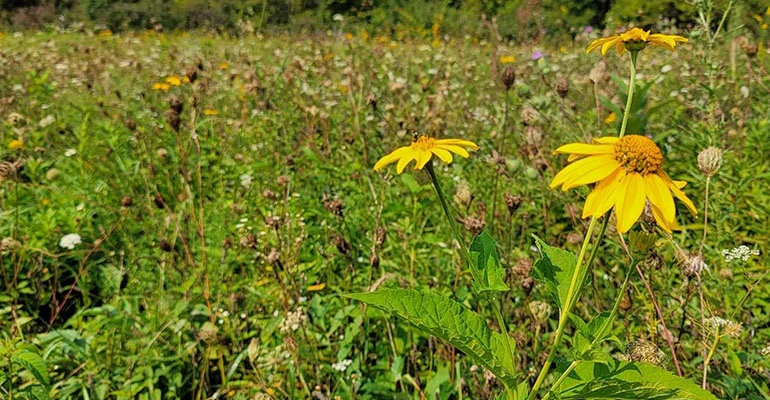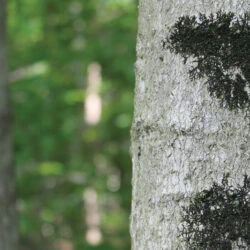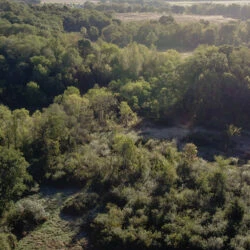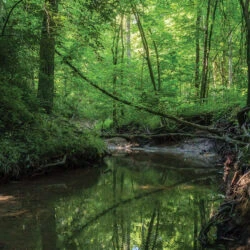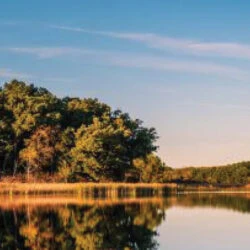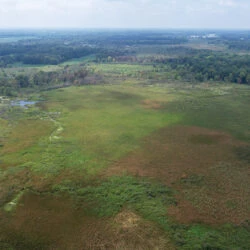Little Wabash River Nature Preserve: The Place That Keeps On Giving
Article and photos by Tessa Aby-Kruger and Joanna Stebing
ACRES Land Trust protects a variety of properties with diverse habitats, plants and animal communities. While some preserves offer public access, many are closed for various reasons and under permanent protection.
Some preserve lands are recovering from human impact, while others contain sensitive habitats. Such differences make transparency about what is happening in these unique places all the more important. This is where site-based research comes in, particularly student-based work.
ACRES has a long history of allowing research on their preserves, beginning with botanical inventories in the 1960s. Since then, research has expanded past professional contracts or Department of Natural Resource partnerships into student-led research. Student research takes place on both open and closed properties, with projects covering star-nosed moles, weasels, bees, Blue-Eyed Mary flowers, bats, arthropod diversity and much more.
By allowing research on its properties, ACRES provides great opportunities for young scientists to learn about local ecosystems. This data is often used to help guide stewardship and conservation efforts while giving burgeoning ecologists a chance to experiment with research methods and styles. It’s a mutually beneficial partnership!

When we started our research at ACRES Little Wabash River Nature Preserve (LWRNP), the ins and outs of what it takes to properly survey a site were entirely new to us. We were wonderfully humbled by this preserve over the course of that year. We formed a relationship with the property that we’ll never forget or cease to be thankful for: crawling on our hands and knees while dragging a transect line through dense honeysuckle, high kneeing through brambles and rose, eating our lunch cross-legged in the parking lot while listening to local birds and the immense joy of finding the elegant spiraling blooms of Ladies’ Tresses orchids in the Mills-Black Tract portion of the preserve.
This research set a precedent of character development and we learned skills that have served us in other surveys since. We’ll never misidentify certain plants again, and we still chuckle over those “greenhorn” mistakes we made.
Our research took place in 2019, almost a decade since the initial (and most recent) survey at LWRNP. This timing enabled us to do work on the site’s plant community changes, non-native invasive species spread and old field succession. The ecological and floristic research we conducted provided data on the forest overstory, midstory and understory. At our specific study plots we measured soil moisture, available light and leaf litter. Future work at LWRNP can use our research as a stronger baseline for interpreting changes at the preserve.
The 2019 study of the Mills-Black field became an interesting multi-year experience involving orchids. Upon first inspection, we found two species of Ladies’ Tresses orchids: Nodding Ladies’ Tresses (Spiranthes cernua) and Northern Slender Ladies’ Tresses (S. lacera).
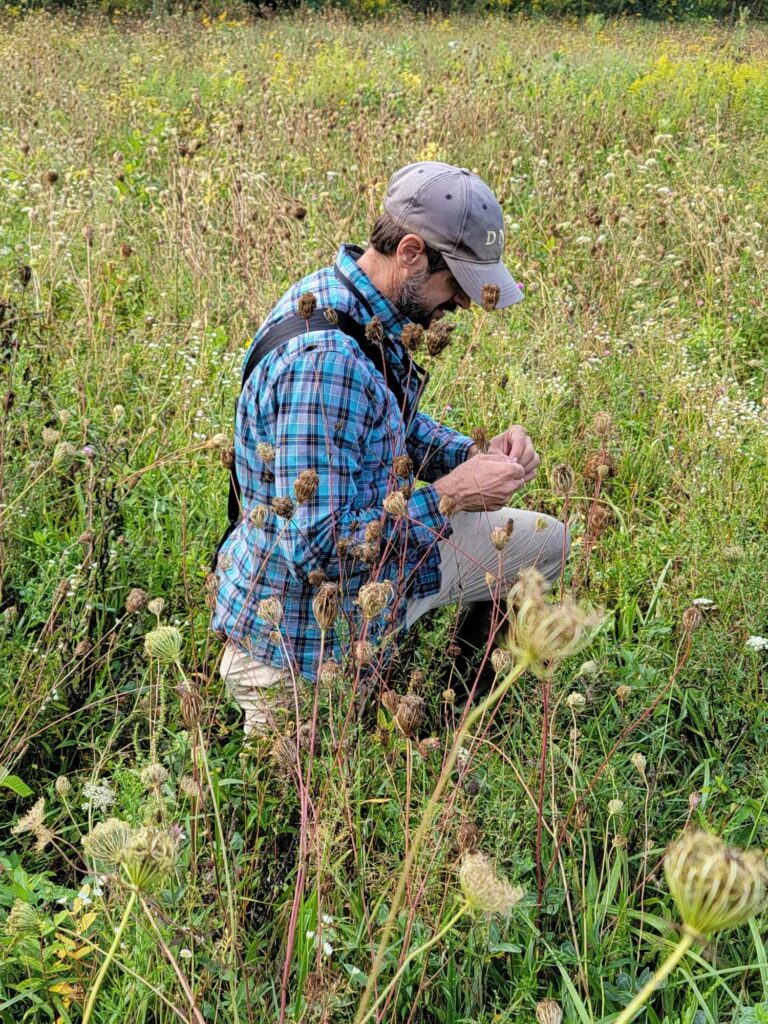
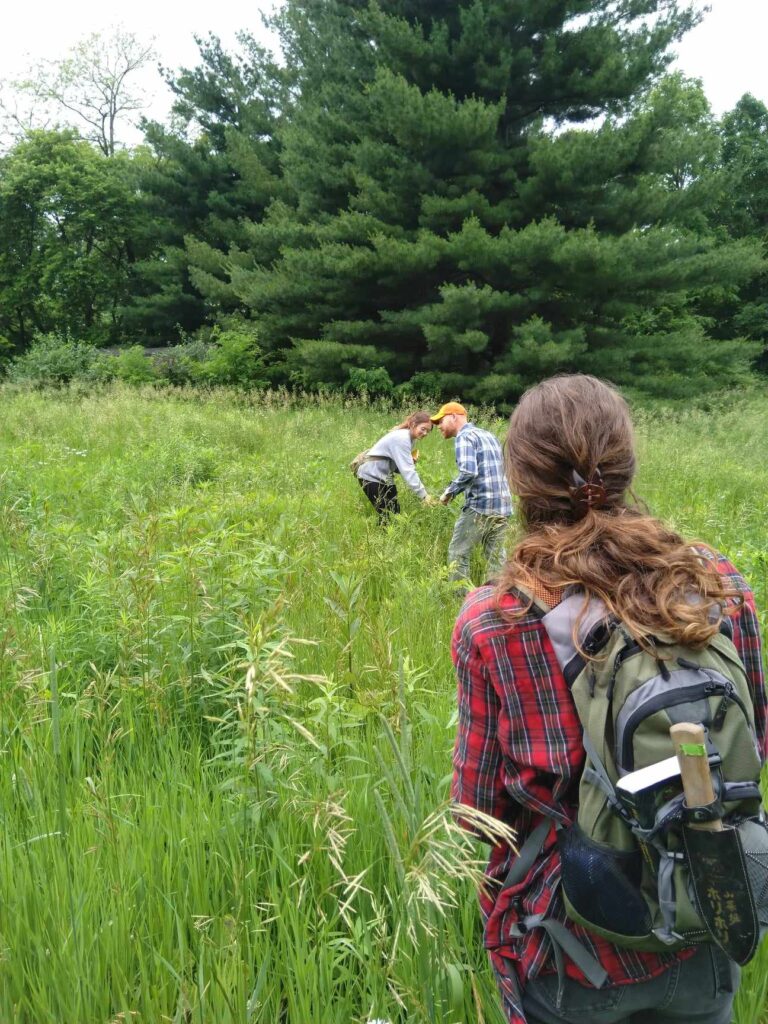
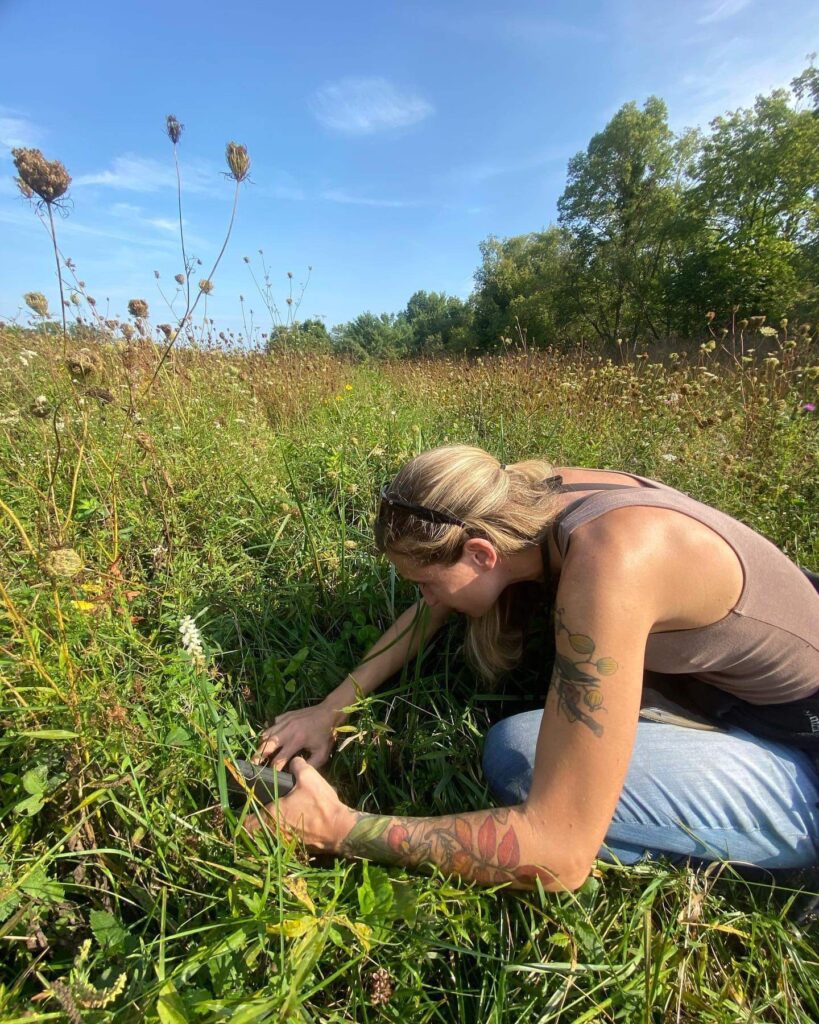
We revisited the tract in 2022 with state botanist Scott Namestnik to better identify the two orchid species. Due to a change in how the science community identifies and groups these plants, Nodding Ladies’ Tresses (S. cernua) was actually Great Plains Ladies’ Tresses (S. magnicamporum), an orchid currently listed as endangered in Indiana! Our expanded study also discovered a third orchid, Small Ladies’ Tresses (S. ovalis).
These additions to our initial survey remind us that site-based work is never finished. To ensure success, research must be community-based over generations. Previous work established the basis for the study we did; in turn, our study set up building blocks for future students.
Although LWRNP is a heavily altered habitat, both landscape legacy and the removal of agitating forces are allowing the land to heal and develop into something of its own accord. We have the power to create conditions for change, to allow an uninhabited area to restore itself. Even if the old field cannot return to exactly what it once was, it will still become a unique natural area by existing and it will develop a system of its own, perhaps a novel one. The best thing we can do in research is document those developments as clearly as we can.
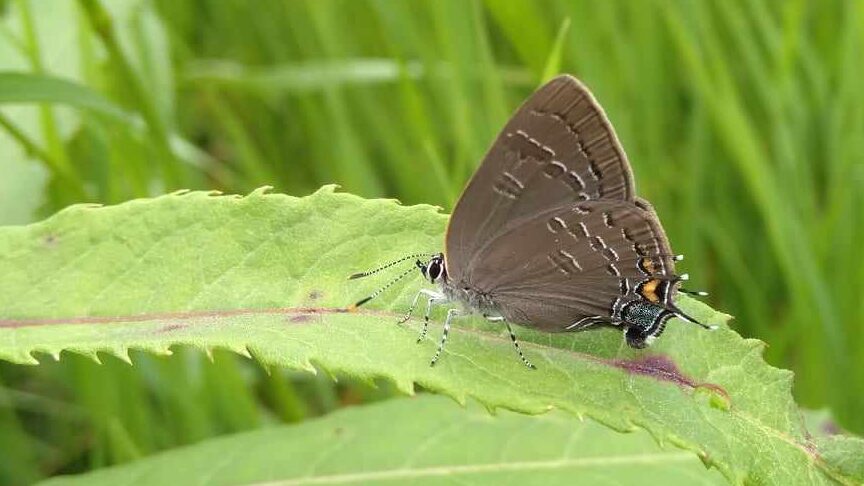
We are excited to announce that in 2023 our completed LWRNP research paper was accepted and published by The Great Lakes Botanist, a peer-reviewed, open-access quarterly journal of the Michigan Botanical Society. Without organizations like ACRES, students like us would be hard-pressed to find such fantastic opportunities for learning and publication.
Thank you to ACRES and those who made this research possible!
This article originally appeared in the Spring 2024 ACRES Quarterly, mailed to members each season. The 20-page Quarterly features ACRES news, stories and events. You can subscribe by becoming an ACRES member with a donation of $20 or more. Click here to learn more!

